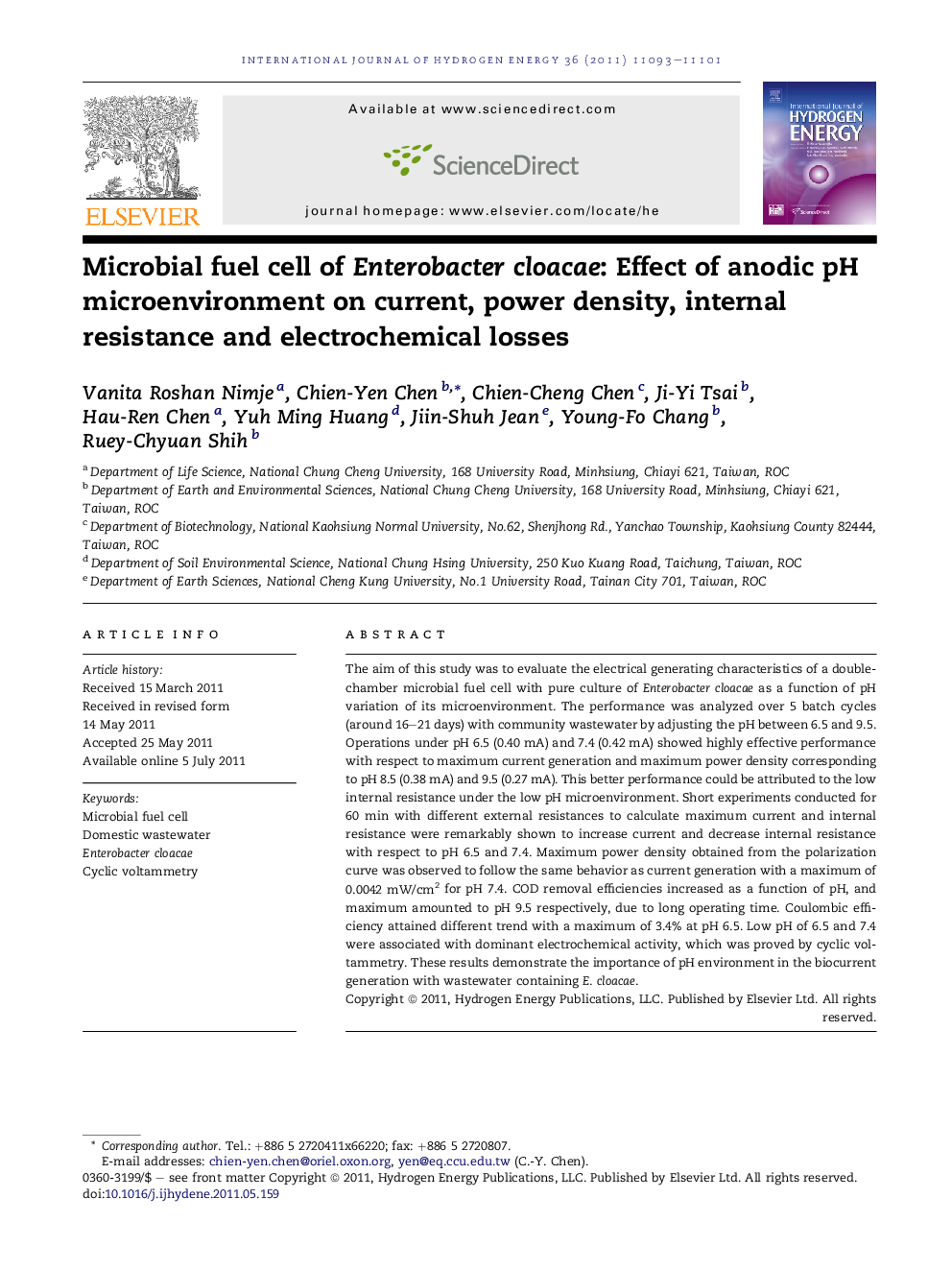| Article ID | Journal | Published Year | Pages | File Type |
|---|---|---|---|---|
| 1277581 | International Journal of Hydrogen Energy | 2011 | 9 Pages |
The aim of this study was to evaluate the electrical generating characteristics of a double-chamber microbial fuel cell with pure culture of Enterobacter cloacae as a function of pH variation of its microenvironment. The performance was analyzed over 5 batch cycles (around 16–21 days) with community wastewater by adjusting the pH between 6.5 and 9.5. Operations under pH 6.5 (0.40 mA) and 7.4 (0.42 mA) showed highly effective performance with respect to maximum current generation and maximum power density corresponding to pH 8.5 (0.38 mA) and 9.5 (0.27 mA). This better performance could be attributed to the low internal resistance under the low pH microenvironment. Short experiments conducted for 60 min with different external resistances to calculate maximum current and internal resistance were remarkably shown to increase current and decrease internal resistance with respect to pH 6.5 and 7.4. Maximum power density obtained from the polarization curve was observed to follow the same behavior as current generation with a maximum of 0.0042 mW/cm2 for pH 7.4. COD removal efficiencies increased as a function of pH, and maximum amounted to pH 9.5 respectively, due to long operating time. Coulombic efficiency attained different trend with a maximum of 3.4% at pH 6.5. Low pH of 6.5 and 7.4 were associated with dominant electrochemical activity, which was proved by cyclic voltammetry. These results demonstrate the importance of pH environment in the biocurrent generation with wastewater containing E. cloacae.
► A pure strain of E. cloacae for the treatment of domestic wastewater at the different pH in a microbial fuel cell. ► We examined power density and electrochemical activity. ► We investigated the importance of internal resistance for the judgment of current generation. ► The outperformance of maximum electrochemical activity due to low internal resistance. ► The use of E. cloacae in MFC for wastewater treatment achieved sustainable electricity generation
